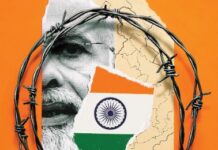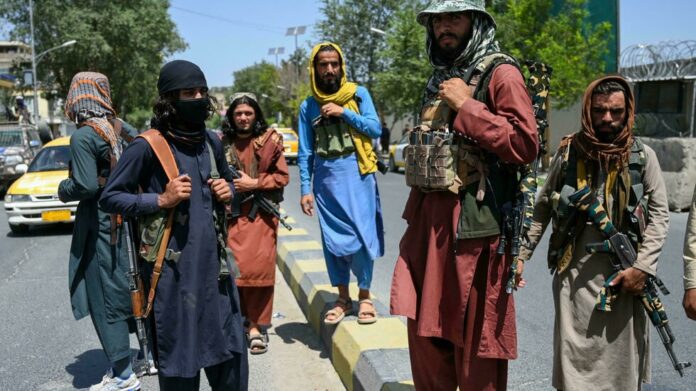The Taliban’s rapid takeover of Afghanistan was the result of not only their strength on the battlefield and a strategy that began in the rural provinces but of a collapse of morale among an underserved Afghan military.
WHY DIDN’T THE AFGHAN ARMY FIGHT?
Despite the $83 billion and two decades the US spent equipping and training the Afghan army, in many provinces the military appeared to evaporate in the face of Taliban insurgents.
With more than 300,000 personnel and equipment that was more advanced than the Taliban arsenal, Afghan army forces were formidable – on paper. In reality, they had been plagued by corruption, payoffs, poor leadership, lack of training and plummeting morale for years.
Desertions were common and US government inspectors had long warned that the situation was unsustainable.
The government outpost in Imam Sahib, a district of Kunduz province, held out for two months against the Taliban. But resources and supply runs soon dwindled. “In the last days, there was no food, no water and no weapons,” trooper Taj Mohammad, 38, told the Wall Street Journal. The remaining troops eventually fled for the provincial capital, which itself collapsed weeks later.
Troops on the front line in Afghanistan’s second-largest city Kandahar were given “one cardboard box full of slimy potatoes” for an entire police unit’s daily rations last week, the New York Times reported.
Kandahar police said before the city fell they hadn’t been paid in six to nine months, according to the Washington Post, making Taliban offers more tempting.
Taliban insurgents mixed threats and bribery, along with propaganda and psychological warfare, as they took city after city – some with barely a shot fired – eventually capturing the capital.
Beginning last year, Taliban leaders started offering desperate troops money in exchange for weapons, according to the Washington Post, in meetings and deals dubbed “ceasefires” by Afghan officials. “Over the next year and a half, the meetings advanced to the district level and then rapidly on to provincial capitals, culminating in a breathtaking series of negotiated surrenders by government forces,” the Post wrote.
And yet as foreign troops began their final withdrawal based on a Trump administration deadline set for May 1, Washington and Kabul were confident the Afghan military would put up a fight against the Taliban.
Afghan forces did put up strong resistance in some areas such as Lashkar Gah in the south, but they were facing the Taliban without US air strikes or military support. Confronted with smaller but highly motivated groups of Taliban insurgents, many soldiers and even entire units simply deserted or surrendered, leaving the Islamists to capture city after city.
Meanwhile, US intelligence assessments were woefully optimistic. The Taliban could take over Kabul within 90 days, US officials estimated last week. Some 72 hours later, Kabul had fallen.
Even the Taliban were reportedly surprised at how quickly they were able to take control of some provinces.
HOW DID THE US FUEL A TALIBAN VICTORY?
For some, Afghanistan’s collapse was 20 years in the making, as mistake after mistake was made in the Western nation-building project. But the final nail in the coffin of the Afghan government came last year when former US president Donald Trump signed a deal with the insurgents to withdraw US troops by May 1.
For the Taliban, it was a sign that their victory was imminent after nearly two decades of war. For Afghans, it was a betrayal and meant their abandonment by the international community.
The Taliban continued to attack government forces but started to combine those with the targeted killings of journalists and rights activists, heightening the environment of fear.
They also pushed a narrative of inevitable Taliban victory in their propaganda and psychological operations. Soldiers and local officials were reportedly bombarded with text messages in some areas, urging them to surrender or cooperate with the Taliban to avoid a worse fate.
Many were offered safe passage if they left their weapons and did not put up a fight, while others were reached through tribal and village elders.
WHAT HAPPENED TO THE ANTI-TALIBAN WARLORDS?
With Afghan forces unable to hold off the Taliban advances, many of Afghanistan’s notorious warlords rallied their militias and promised to fight the Taliban if they attacked their cities. But with confidence plunging in the ability of Afghanistan’s government to survive, the writing was also on the wall for the warlords.
Their cities fell without a fight.
Longtime warlord Ismail Khan, known as the “Lion of Herat” and seen as his city’s last hope, was captured by the Taliban as Herat fell.
Uzbek commander and former vice president Abdul Rashid Dostum as well as fellow warlord Atta Mohammad Noor briefly joined the battle for Mazar-i-Sharif before fleeing into Uzbekistan as their militias abandoned their humvees, weapons and even their uniforms.
WHAT WAS THE TALIBAN’S STRATEGY?
The Taliban had been quietly pursuing what has been called an “outside-in” strategy, slowly tightening their grip on provincial rural areas before moving in to take over the regional capitals.
The insurgents also reportedly began negotiating deals and surrender arrangements – with everyone from individual soldiers and low-level government officials to provincial governors and government ministers – long before the launch of their final blitz in May.
Images from the Taliban’s final march to Kabul were not of bloody battles but of Taliban and government officials sitting comfortably as they formalised the handover of cities and provinces that were taken largely without a fight.
By Sunday, president Ashraf Ghani had fled the country, reportedly to Tajikistan, bringing a stunning end to the 20-year international campaign to transform Afghanistan into a modern state with a central government whose power extended into the diverse provinces across the country.
As a tense calm fell across Kabul, with many people hiding in their homes in accordance with Taliban orders, fears of a return to the brutal rule the Taliban imposed when it was last in power led others to throng the roads leading to Hamid Karzai international airport, where chaotic scenes unfolded as both Afghans and foreigners made a last mad dash to escape.























